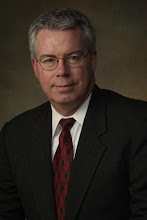…But You Can Adjust The Sails.
These words to the Ricky Skaggs song Can’t Control The Wind are a great entrée into the first of four monthly segments on the Total Leadership Process. These particular words came to mind as I was reading a recent Fortune article about Larry Ellison and the BMW Oracle Racing Team returning the America’s Cup Trophy back to the United States after a fifteen-year absence. His thoughts on the victory centered on the right combination of technology, sailing skills and strategy.
Strategy is the focus of this segment as it forms the foundation of the Total Leadership Process and reflects the Purpose of the organization. In actuality, the organizational Purpose is a combination of Vision, Values, Mission and Strategy but it is the Strategy that determines how the organization will compete in its current market and industry. Understanding the importance of this definition is crucial as the competitive landscape and assumptions in every industry are changing.
What strategic assumptions worked when economic and industry growth rates were 10% - 15% before the recession will be different in the 2% - 3% growth economy of the next several years. Likewise, targeting double-digit growth rates will require different strategic assumptions than in previous years where that level of growth was not the norm. A strategy setting a path to 12% growth year-over-year sounds good at face value. However, if the industry is growing 15%, the strategy loses market share.
Like the wind challenges sailors, we may have difficulty totally understanding and reacting to the competitive landscape. Some events we can see well in advance. The recent healthcare reform legislation was announced well in advance, enabling organizations to think through various contingency plans on how to react to the final version. In effect for less than a week, several large companies already announced changes as a direct result of the new law.
Other competitive events are not well known, yet must be anticipated in order to put forth a reasonable strategy for success. Most of us cannot accurately predict the future. But the issue is not to predict the future; it is to prepare for the future. Successful leaders continuously run scenarios for their market or industry helping them adapt quickly to their changing competitive landscape.
With so many changes happening at an ever-increasing rate, do you have a means to capture what your market is telling your organization every day in a way that is meaningful to the contingency scenarios relevant to your strategy? Ask yourself how much time your organization spends managing the past versus navigating towards the future. If we drove our cars the same way how much progress would we make?
When the wind changes direction, which way will your crew be facing?
Lead Well!
Sunday, March 28, 2010
You Cannot Control The Wind…
Labels:
Competition,
Growth,
Leadership,
Mission,
Strategy,
Values,
Vision
Subscribe to:
Post Comments (Atom)


No comments:
Post a Comment